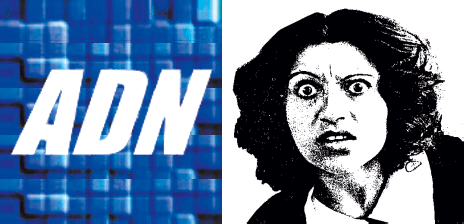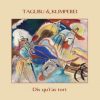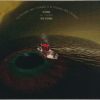Riccardo Sinigaglia & Mario De Leo – Lettera Cosmica
Dei prodigi di Riccardo Sinigaglia si è detto più volte (Futuro Antico, Correnti Magnetiche, Doubling Riders, sono solo alcuni dei suoi mondi paralleli), meno noto almeno nel campo musicale è Mario De Leo, pugliese, classe 1944 nonché artista visivo emigrato dalla Puglia in quel di Milano nei primi ’70, in pieno fermento contro culturale. E’ anche cofondatore della cooperativa L’Orchestra con Umberto Fiori, Franco Fabbri degli Stormy Six, Moni Ovadia oltre allo stesso Sinigaglia tra gli altri. In questa “Lettera Cosmica” registrato nel 1981 e rimasto finora inedito, i due si misurano con le consuete macchine analogiche, nastri preparati con corde e piano fatti magari passare per i filtri di un Synthi EMS e di un Teac 3340 a quattro piste. Ne escono quattro pezzi uno per ogni stagione dell’anno, dove spiccano soprattutto i profumi etno-mediterranei di Autunno, e poi i synth, le percussioni e le corde che si avvitano e dilatano di Inverno, perfettamente in sintonia con l’era “Kosmische”.
7.5
Gino Dal Soler (Blow Up) Luglio/Agosto 2023
Lettera Cosmica is particularly interesting since it dates back to the start of Futuro Antico and quite a bit before Sinigaglia‘s deep dive into samplers and digital synthesis of post-Riflessi era. Despite decisively acoustic-bound sonic profile – piano, strings, guitar, De Leo‘s vocal abstractions of Southern Italy’s folklore – this turns out to have much in common with those later works. Of course, there are no samplers here, but Sinigaglia anticipates the process with tape loops and analogue effects. This is most audible on “Estate” and “Autunno“. If you want your fix of FA’s trademark fusion of late 1970s electronica and pan-Mediterranean folk head right to bookending “Primavera” and “Inverno“. If Florian Fricke moved to the farm somewhere in Sicily this is how Popol Vuh might have sounded like eventually. Although there’s a strange moment in the middle of “Primavera” with all the reversed guitar loops where I had to check if I haven’t by accident put Broadcast’s ‘Witch Cults’ record with The Focus Group. In sum this ends up sounding like a very compelling ‘transition’ record. Not to discard Mario De Leo‘s efforts either. I’m not exactly sure about the concept and what this music has to do with seasons. But I do love the artist’s electronic-circuitry styled into a sort of Paleolilthic cave painting meets Futurism artworks. I don’t know about “cosmic spiritualism” promised in the press notes, but it looks interesting. Also, I’m wondering why not splash out on professional translator to render the liner essay a bit more readable in English. Or just leave it be in Italian. It’s clear that the author, Andrea Maria Simoniello has a firm grasp of the subject, but the entire thing feels awkwardly ‘google translated’.
Snows Ov Gethen
Since the 1970s Mario De Leo works as a musician and visual artist. His mechanical paintings are hybrid works that reveal the cosmic spiritualism hidden in the meanders of electronics. With Riccardo Sinigaglia (Futuro Antico, Correnti Magnetiche, Doubling Riders) De Leo consolidates an artistic and human partnership with Lettera Cosmica, a work unpublished to date, produced and recorded in 1981.
The Attic Mag June 15, 2023
Eine bedeutende Rolle spielt RICCARDO SINIGAGLIA (*1953), mit dem EthnoelektronikTrio Futuro Antico, dem audiovisuellen Projekt Correnti Magnetiche und den unkategorisierbaren The Doubling Riders. Lettera Cosmica (AD9 013 / Black Sweat Records, BS080, LP) zeigt ihn, 1981 (!), mit Tapeloops, Synthesizer, Percussion, Keys & Flute mit ‘Primavera‘, ‘Estate‘, ‘Autunno‘ & ‘Inverno‘ in Partnerschaft mit MARIO DE LEO (*1944) an Mandolin, Acoustic Guitar & Vocals. Dieser in den frühen 60ern aus Apulien nach Mailand gekommene bildende Künstler war da zu einer treibenden Kraft der Gegenkultur geworden,als Mitbegründer der Cooperativa L’Orchestra (denkt an das gleichnamige Stormy Six Labels) zusammen mit Franco Fabbri, Sinigaglia und Moni Ovadia (Almanacco Popolare, Gruppo Folk Internazionale). Die rot beflaggte Parole ‘Popolare’ und seine Bekanntschaft mit Michele Straniero (Nuovo Canzoniere Italiano) zeitigten De Leos folkloristisches Debut “Suonata Situazione” (1977), unterstützt von Piero Milesi & Maurizio Dehò von der Gruppo Folk Internazionale (Milesi konnte man auf Cuneiform wiederhören, Dehò bei Correnti Magnetiche, The Doubling Riders und Venosta). Gefolgt von “Zinnannà” (1980). Darauf, dass die Anni di piombo, die bleiernen Jahre, mit dem Mord an Aldo Moro (1978) und dem Anschlag von Bologna (1980) immmer bleierner und faschistoider wurden, reagierte Maurizio Bianchi mit “Mörder Tape” (1980) und “Symphony for a Genocide” (1981), Sinigaglia & De Leo mit diesem nach 42 Jahren doch noch zu hörenden Widerhall auf den Lauf der Zeit. Während De Leo als Indienfahrer posiert, hatte Sinigaglia mit ‘Futuro Antico’ seine in “Ambient Music” (1985) und “Riflessi” (1986) weiter ausgeformte Formel gefunden: Sich rückbesinnend in die Zukunft schrauben. Nur dass, wie Peter Sarram zu “Ambient Music” schreibt, die Zukunft annulliert wurde aufgrund eines degenerativen Prozesses, der genau zu der Zeit begann, als diese Musik zum ersten Mal aufgenommen wurde. Ausgelöscht durch den Raum und Zeit fressenden rasenden Stillstand des Turbokapitalismus. Sinigaglias Magischer Minimalismus als ein schönes Beispiel für das, was David Toop in “Exotica” ‘pink noir’ nannte, klingt nachträglich ahnungsvoller und unheimlicher als im Zeitpunkt der Entstehung. Die surrenden Wellen, sirrenden Loops und das liquide, klappernde, indisch unkende Tamtam von ‘Primavera‘ kreisen als Steve Reich’scher Prozess und spulen dabei De Leos Saitenspiel und zwitschernde Spatzen mit auf. ‘Estate‘ mahlt protestierende Vogelrufe, holzigen Ruderbeat, Rassel, den feierlichen Singsang eines Frauenchors mitsamt wieder der Mandoline. Im ‘Herbst‘ tonbandspulen elegische Streicher, De Leo ohrwurmt dauernd die Zeilen eines launigen Botta e risposta-Lieds, ein Pianoriff repetiert, vereist in kristallinen Tropfen, verdunkelt sich zum Drone. Im ‘Winter‘ tanzen Eiszapfen und spiralt helle Harmonikamelodik zu dunklen Synthieloops, abgelöst von gekonntem Saitenspiel mit Deadhead-Touch, kuriosem Flöten und quick gepicktem Staccato. Die andere Zukunft, sie war immer zum Greifen nah.
Rigobert Dittmann (Bad Alchemy)



